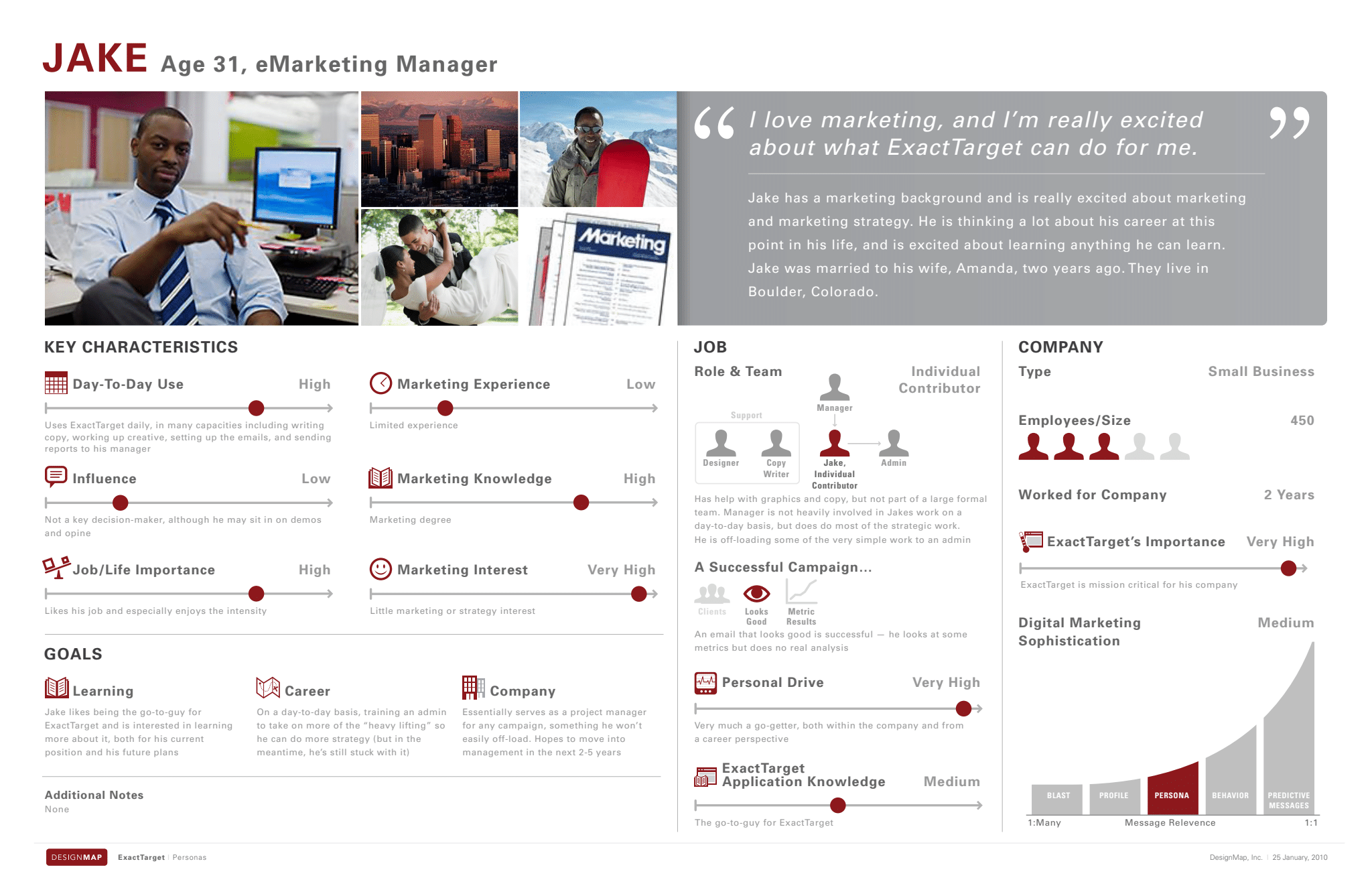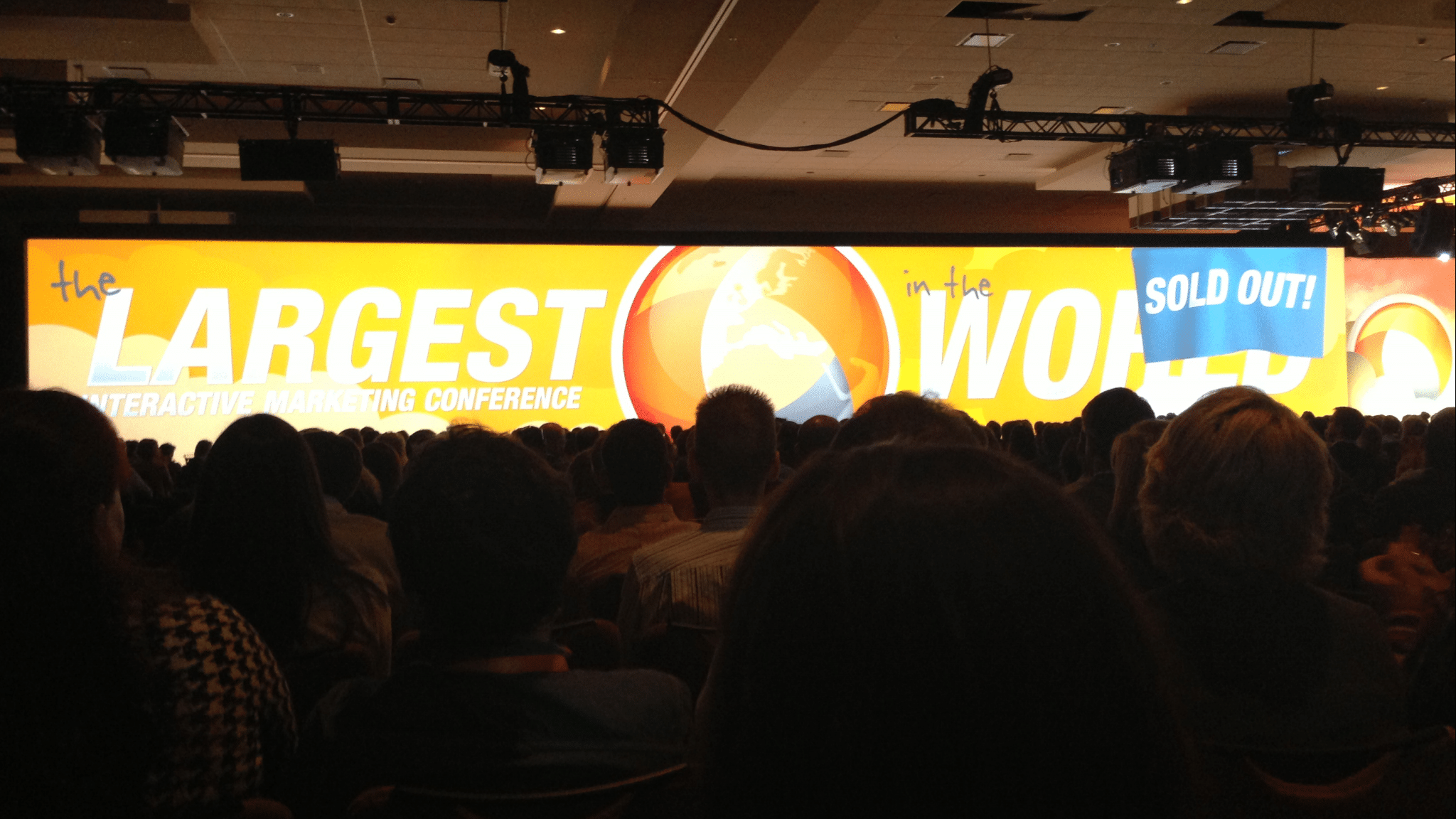Your company’s at an inflection point.
You just raised a big round of funding. You made promises to your investors. They’re expecting serious growth, and they want it fast.
And you’re about to give it to them. You razzled and dazzled them with your product vision. You’re going to meet a massive unmet need in your market and make billions of dollars.
There’s just one problem…
You need to get your team onboard.
You see, your product vision’s disruptive. It’s going to require change. Big change. And that change is going to be painful. Teams will get reorged. Employees will be laid off. And some of the features your product owners poured their blood, sweat, and tears into will cease to exist.
So you know there’s going to be resistance. You know you’ll need to do something to get your stakeholders bought in and excited. But what?
Some years ago, Scott McCorkle, COO of ExactTarget, engaged us to answer this question. As a crucial early step in a 7 year engagement, we partnered closely with Scott to craft, iterate on, and align ExactTarget’s teams behind a disruptive product vision that defined the MarTech industry for years to come. The resulting platform was first-of-its-kind and was ultimately acquired by Salesforce for $2.5B.
Doing that wasn’t a walk in the park. We hit some roadblocks along the way. We had to cross some big chasms. But in the end, we helped ExactTarget align on and execute a compelling product vision. My goal today is to show you how you can do the same.
This post won’t be like the others you see on Google. I’ve got nothing about agile or scrum or mission statements or product vision statement templates. Instead, I’ll give you something better. I’ll walk you through the 3 step process we’ve used at DesignMap to align dozens of unicorn and enterprise product teams behind north star visions of their product’s future.
By the end of this post, my goal is for you to be equipped with the technique some of Silicon Valley’s most successful companies use to bring their product visions to life.
So without further ado, let’s get to it.
Step #1—Discover the Right Problem to Solve
Product discovery matters. I cannot emphasize this enough. You could write the most compelling product vision statement the world’s ever seen, but if your product idea isn’t the right one—if it doesn’t clearly map your business goals to the most compelling needs of your target customers—alignment will be tough.
So with ExactTarget, we opened with discovery. A lot of it.
We interviewed stakeholders. We audited the product. We built personas, wrote user stories, and mapped the product ecosystem before conducting trend analysis & strategic forecasting.
All of this was extremely insightful, but the real “aha!” moment didn’t come until we got deep into our research. The team and I had interviewed no fewer than 50 different marketers. They’d shown us countless spreadsheets and presentations and post-it notes they’d used to coordinate their campaigns. They’d several times recounted the frustration they’d experienced waiting for their IT team to run SQL queries to segment their target audiences.
These were some real customer needs, and we were happy to find them; but it wasn’t until we interviewed a customer Scott had excitedly referred us to that the lightbulb went off. She worked at a national apparel retailer, and had been trying to send emails with different offers to customers based on key attributes: what they’d purchased, how long they’d been a customer, how much they’d spent, or when their birthday was.
She showed us a corkboard she used to model these journeys out. As we looked at the color-coded index cards branching into different pathways at key milestones, we saw exactly what had gotten Scott so excited. Could we go beyond simply providing marketers multiple channels within one interface? Could we create a user interface that’d sit on top of these channels and combine them into a single cohesive journey?
We had the insight we needed. Now it was time for ideation.
Step #2—Collaborate with Your Stakeholders in Ideation
Inspired by our research, we were ready and raring to envision the product. The team was chomping at the bit.
But we couldn’t just start sketching our wildest daydreams and pitching them to ExactTarget’s stakeholders. First, they needed to be aligned around the same customer needs we were. More importantly, they needed to feel included in the decision-making process.
After all, no one’s going to align around a solution they don’t agree with. Getting everyone aligned around your customer research gets everyone on the same page from the beginning and makes the ideation process go way more smoothly.
Not to mention that this sort of collaborative approach is how you get the best ideas. The diversity of ideas from your stakeholders—whether they’re designers, marketers, product managers, or engineers—is essential to finding the right solution. It’s all too easy to just create the thing you want.
So with ExactTarget (and many of our clients since), we employed a collaborative process to generate ideas and iterate on them until we felt we had a truly game-changing product vision.
That process generally goes like this:
- Ideation
- Storyboarding
- Iteration
Step #2.1—Run Persona-Based Ideation Workshops
It began by getting our team and ExactTarget’s together in concentrated Ideation Workshops. We’d focus the workshop on a specific persona. We’d start by sharing information about their challenges, their needs or “jobs-to-be-done”, and their current frustrations with the platform’s UX.
We then took a deep dive into a common scenario this persona would face while using the platform. Storytelling was the name of the game here. We wanted to take the persona insights we’d shared on the previous slide and build empathy by fleshing out the use case.

With customer needs and pain points now at the center of the attendees’ attention, we’d then move to an interactive brainstorm.
First, we had workshop participants spend 5 minutes writing down or sketching as many ideas as they could think of. No idea was a bad idea; the goal was to get everyone into a psychologically-safe, free-flowing headspace together.
Next, we engaged in a workshop activity called “Crazy 8’s”. We had workshop participants pick one of their ideas and then come up with 8 different ways the idea could be done, sketching things like user flows, UI elements, or whatever.
Once done with that, we’d have them pick one of their 8 implementations and expand on it with more detail. After 10 minutes, we’d ask participants to draw their concepts on a whiteboard or a post-it note in front of the room for everyone to see. With a DesignMap director acting as workshop facilitator, we’d go around the room and let everyone give feedback on the ideas.
Finally, everyone would vote on their 3 favorites. By the end of each workshop, we’d have a strong consensus around which ideas showed the highest potential and were worth exploring.
Step #2.2—Create a Storyboard for Your Product Vision
Taking these ideas back to our core design team, we then created storyboards for them. These work exactly how they do for movies or videos. We draw out a very basic sketch of how a persona would perform one of their “jobs-to-be-done” using the new product. Then we weave a bunch of these together to form the overarching vision of the platform.
Armed with the storyboard, we then walked our stakeholders through them, making careful note of their feedback.
Step #2.3—Iterate Until You’ve Got a Compelling Product Vision
With our stakeholders’ feedback in tow, we’d go back to the design dungeon to make the next iteration.
We did this many times. We might’ve pulled an all-nighter or two—not because anyone asked us to, but just because we’re like that. After a few weeks of high-fives, heated debates, miniature bursts of genius, and maybe a few too many macchiatos, we finally had it.
Journey Builder was born. It was going to be a game-changer.
Step #3—Empower Your Executive Champion with a Visiontype
Once we had ExactTarget’s product vision, we were inspired. Our designers were inspired. Scott (our executive champion) was inspired. But if we’d’ve taken the vision straight to product leaders and executives who hadn’t been privy to our process or findings, we’d’ve probably been met with a lot of puzzled reactions.
When we started to outline what sort of transformation this vision would require, those puzzled reactions might’ve turned to angry ones. Here’s why:
Transformational change can be really painful.
When you envision a platform structured around user needs rather than your org chart, executing it almost always involves reorg.
So not only are product teams resistant and sometimes incensed that the products or features they poured their blood, sweat, and tears into might be completely changing shape or going away, but their entire teams might cease to exist.
As you can imagine, this involves some very uncomfortable changes. Leadership gets reorged. New employees get hired. Existing employees get reassigned (or laid off). So when you couple this with all the resources a platform transformation requires, you can see that getting people bought-in is crucial.
But when your product vision is just a bunch of aspirations and ephemeral words—when people can’t actually see it—it’s virtually impossible to get them bought in and excited. And without that excitement, your product vision is dead in the water.
This is where Visiontypes come in.
Visiontype is a term coined by Silicon Valley Product Group’s Marty Cagan. Basically, a Visiontype is a high-fidelity prototype of what your product vision could look like in 3-5 years. The idea is not so much to provide a prototype of UI-ready designs that you can turn around and build right away, but instead to help people envision how your platform can change their customers’ lives.
It’s our experience that once designers or executive champions have the Visiontype in-hand, and people are able to really see what the platform could look like, that’s when the lightbulbs go off.
With ExactTarget, the Visiontype was instrumental in getting everyone aligned behind the new vision. The internal teams and executives were so impressed, they decided to debut it in front of thousands of marketers at ExactTarget’s annual Connections conference. When the crowd erupted in cheers, we knew alignment wouldn’t be an issue.
Transforming the Marketing Industry with a $2.5B Product Vision
With the ExactTarget team from top executives down bought into the vision, we started executing the product strategy. We collaborated with PMs on the product roadmap and prioritization. We worked closely with engineering on buildout. We went through several iterations of this process, continuously refining the product vision while rolling out new pieces of the platform.
Each year at their Connections conference, Scott would present the latest additions, upcoming releases on the product roadmap, and the latest version of the vision to much applause.

Since presenting their product vision in 2010, attendance at ExactTarget’s Connections conference doubled every year until reaching 10,000 marketing executives in 2014.
4 years from the start of our work together, ExactTarget was acquired by Salesforce. Rumor has it that Journey Builder, the crown jewel of ExactTarget’s product vision, was a huge factor behind Marc Benioff's decision to acquire them for $2.5B. It was a first-of-its-kind tool that completely transformed how marketers approach multi-channel messaging. It’s come to be the de-facto standard in marketing automation, with everyone from HubSpot to Marketo to Eloqua now having their own version of Journey Builder.
A Game-Changing Product Vision Isn’t Enough
The brilliant PMs, designers, and engineers at ExactTarget were the real heroes of this story. None of this would’ve happened if they hadn’t committed to change and worked together to bring the vision to life.
If you take away one thing from this story, let it be this: inspiring and aligning your team behind your product vision is pivotal. Over the 25+ years we’ve been designing software, we’ve seen this alignment drive critical outcomes—everything from ARR growth to massive fundraises to unicorn valuations—for dozens of B2B startups and enterprises.
It’s not an easy thing to do, but following our 3-step process will help immensely.
On behalf of everyone here at DesignMap, best of luck with your product vision. May it take you to the moon and beyond!
If you need help crafting a game-changing product vision and aligning your team behind it, we’d love to help! Give us a shout on our contact page to speak with one of our product strategy & design consultants.


